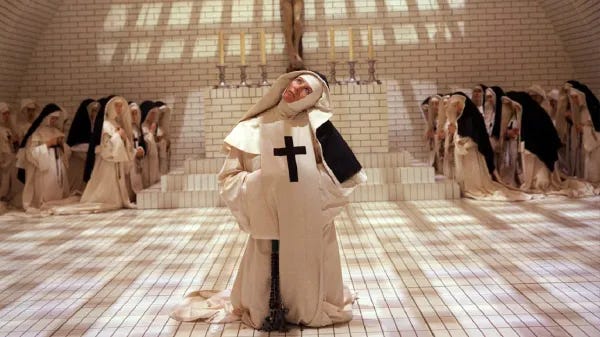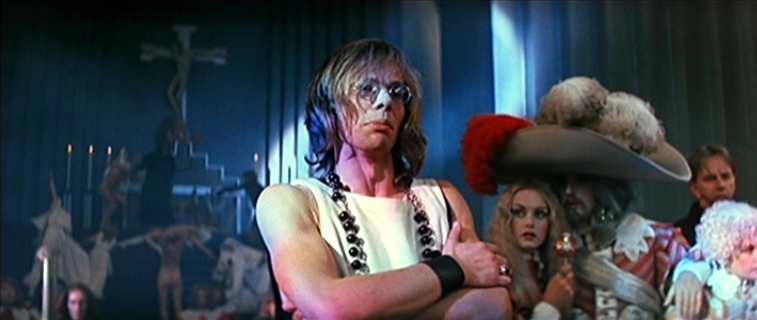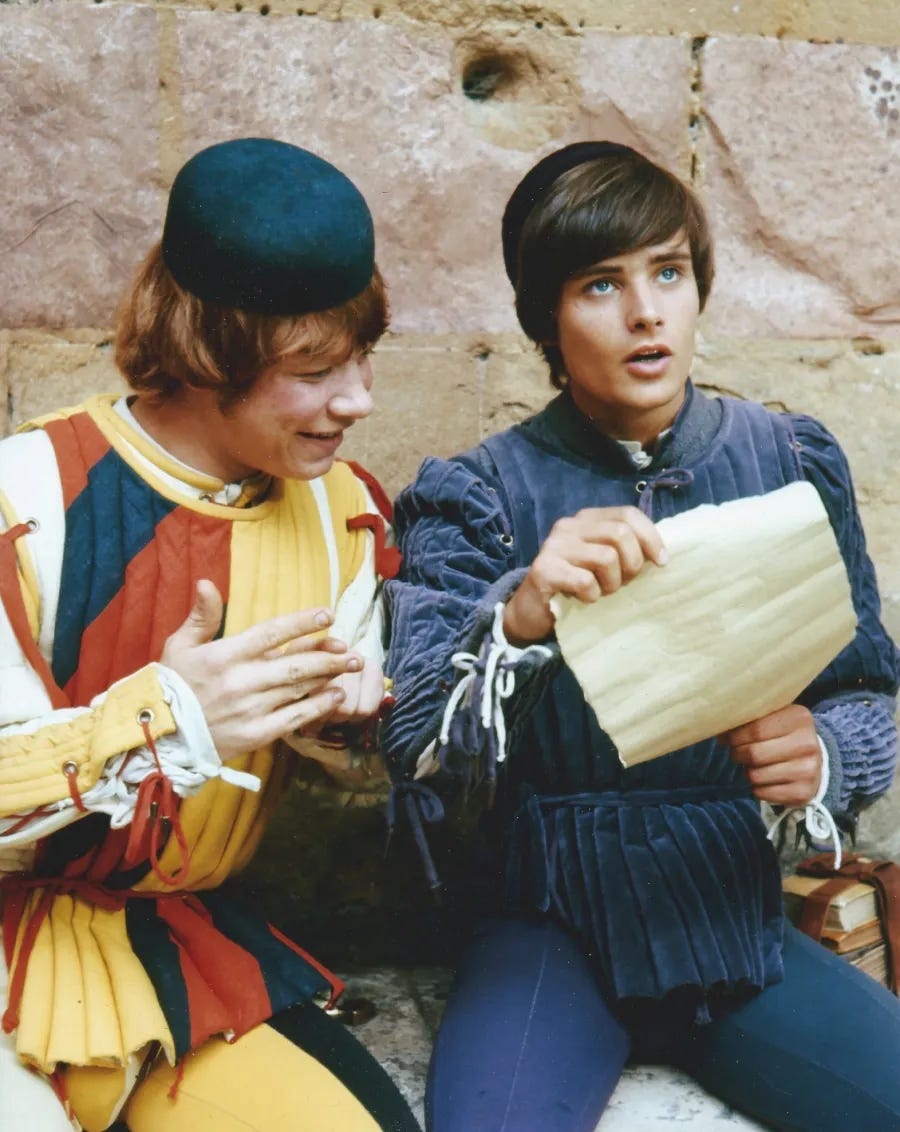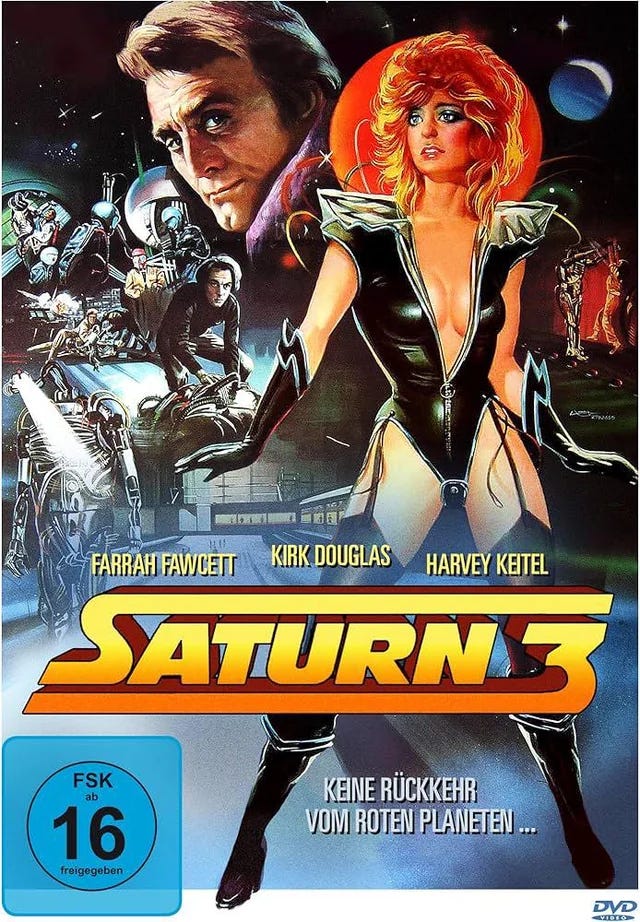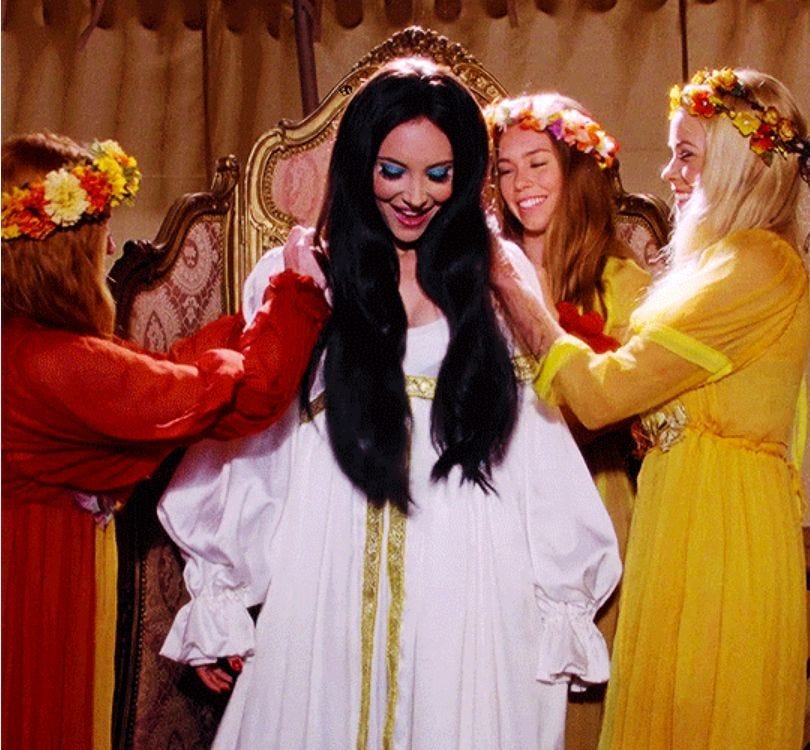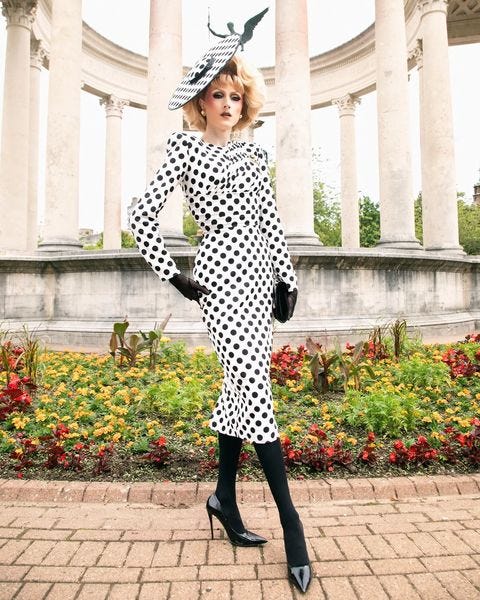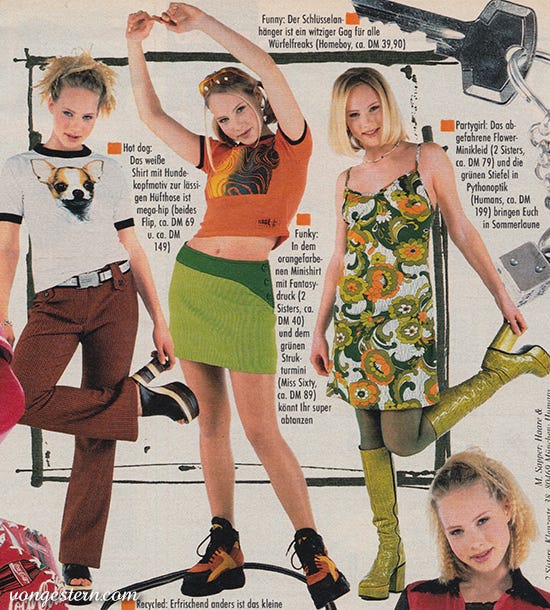The Inevitable Stain of Time: Period Pieces
How the time the movie was made imprints on period pieces
One of my favorite film aesthetics is 70s-does-medieval. It’s as if the style of the 70s is inescapable no matter how authentic the corsets and pantaloons appear to be. Feathered haircuts and blue eyeshadow are paired with 17th-century costumes. The coloring is lush and, well, groovy. It’s a far-out scene, man.
I recently watched The Devils (1971) in a video store in the hip Highland Park neighborhood of Los Angeles. The store, Videoteque, has shelves on wheels that move to the side to create a screening space where movies are projected onto a bare wall. I have always wanted to watch The Devils as close to uncut as anyone in the US can get. I missed a screening at The Music Box in Chicago about 7 years ago, so when I saw this was happening I had to go.
The Devils is notorious for being so shocking that it was slapped with an X-rating and banned in multiple countries. It was heavily censored in order to be seen at all. Its graphic nudity and sacrilegious scenes have rarely been seen in full until recently.
In other words, this movie has a ton of lore. I couldn’t wait to see it.
Luckily for me, and surprising to the store owner who had just gotten this copy of the film from Spain, it had several of the cut scenes in it (not all of them, but a lot of them), and those scenes are shocking. But the film is FANTASTIC as it tells the true story of a village in 1637 that accused a priest of witchcraft for political reasons, utilizing religious fervor and manipulating a convent for broader political gain. I highly recommend this Ken Russell masterpiece and I personally loved how difficult it was for this 1971 period piece to shed any remnants of the early decade.
The Videoteque microcinema snickered when Michael Gothard first appeared onscreen as Barre the Witchhunter. Because…eh, you can see below. He looks like he ran directly to the set from a West End production of Hair.
It’s like everyone cared so much about their hair in the 70s that the idea of cutting it or covering it in a wig was offensive. Thus this era of filmmaking created a hyper-specific aesthetic. I love watching 70s-does-medieval or any time period really.
Pasolini’s films The Decameron and The Canterbury Tales also include fabulous 70s hair. And don’t get me started on 70s and 80s sci-fi! It’s the future, but you still have a shag?
What is it about this era that did that? We don’t see many silent films set in the Middle Ages that show maidens with finger waves and squires with shoulder pads. Imagine if 1928’s The Passion of Joan of Arc gave Joan arched flapper eyebrows. Okay, now I’m picturing Betty Boop burnt at the stake as Joan of Arc which is hilarious.
Is it the individualism of the era? A rise in accessible fashion or in media that influences fashion? I don’t know! Whatever created this, it is now one of my favorite aesthetics - so much so that it is identifiably its own thing which means the aesthetic itself can be recreated and some films have already done this.
The Love Witch (2016) is a rare film that captures this aesthetic SO perfectly, leaving many audience members believing the movie was legitimately made in the 1970s. There is even a scene that takes place at a Renaissance Faire, paying homage to this particular 70s-does-medieval style. Director Anna Biller’s debut film Viva does the same thing: dripping in 70s color, costuming, and set design so impeccably that it genuinely looks like it is from that era. It is an impressive feat that makes me wonder if there are other defining decades we can do this to. Sure, the black-and-white era is easy to do. Mank and The Artist are two that come to mind that did this successfully, but they didn’t dip all the way into giving us the crackle of old film onscreen.
Try as these decades might, it’s simply too difficult to make something that looks true to a time - especially a time that has no reference on camera. What DID 1637 look like? I dunno! Maybe they did feather their hair!
We see this most often in fashion. This idea came to me because two days after watching The Devils, I watched an episode of Drag Race UK in which Marmalade showed off her 80s-does-40s cut. It’s exquisite! Marmalade pairs a 40s cut with 80s details and shoes. She does such a wonderful job that there are hardly traces of 2024 in this outfit.
Decades folding into each other is common in fashion and design. When I was growing up, we had 90s-does-70s fashions which have come back in a weird time warp. Even lava lamps are being sold at Urban Outfitters again the way they were in 1999 and, perhaps, when the very first Urban Outfitters opened in Philadelphia in 1976.
I love this. One of my superpowers is being able to guess the year a movie or TV show was made based on the look. Costume, hair, makeup, coloring, and camera work are the giveaways. All of these things tell a meta-story on top of the story. It’s the story of when this was made and the context of that era which is pivotal to period pieces. It’s the answer to the question: why this, why now?
Whenever you make a period piece, you have to sort of justify why it is relevant today. The religious manipulation and witch-hunting fervor of The Devils, made in the early 1970s, is more relevant in the days before a second Trump presidency than ever before.
In recent years, there has been a wide array of sex-crazed period pieces that aim to show the soap opera-esque drama of stories of old, while also attempting to right previous white-washing the entertainment industry has done of these stories. I’m looking at shows like Bridgerton, My Lady Jane (sort of fan fiction about a real historical figure), Mary & George (based on a true story), The Great (also loosely based on a true story), and even the recent adaptation of Ripley made at a time of greater gay representation onscreen. All of these shows peacock the flair and ideals of our time onto the bodices and chamberpots of yore. History books may have written out the sexy stuff, the gay identities, and the petty dramas available to peruse in long hidden diaries. But these shows put it all back in because we live in a time where we feel that we can. These shows recontextualize the past, the way that someone once told me that recalling a memory is actually recalling the most recent time that you remembered that thing (trippy, right??? Not sure if that’s scientific, but still).
It’s almost as if we can never really touch the past - not with any sense of purity. We will always stain the past with our present. Put simply: you bring your own baggage when you time travel.
What I’m reading: The Hypocrite by Jo Hamya - just finished. Deceptively breezy novel to read with a ton of depth. Essential reading for writers!
What I’m watching: Wicked, Survivor, What We Do in the Shadows, Somebody Somewhere



